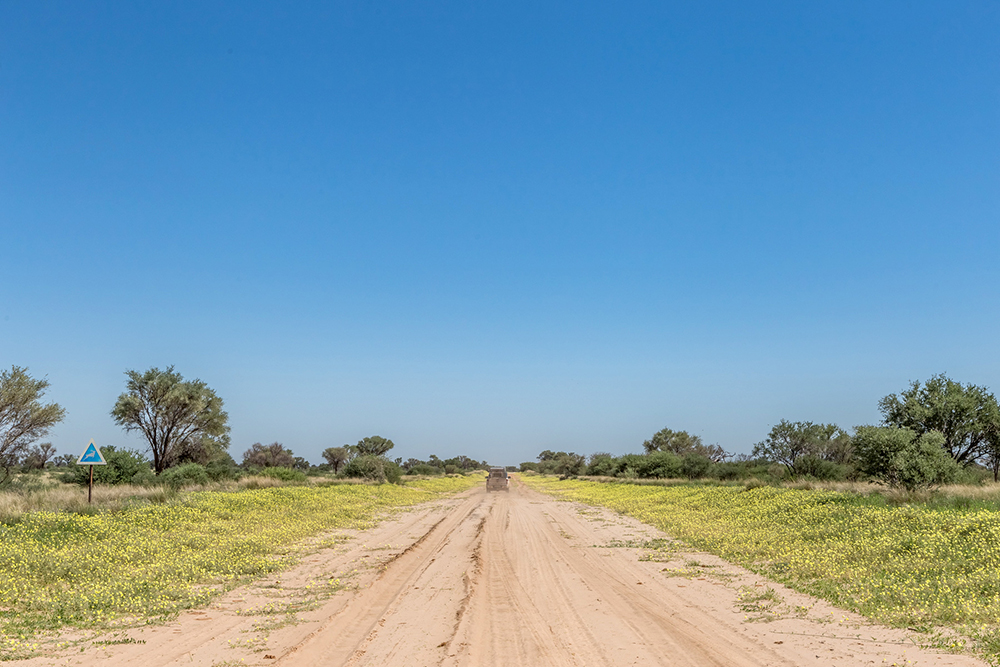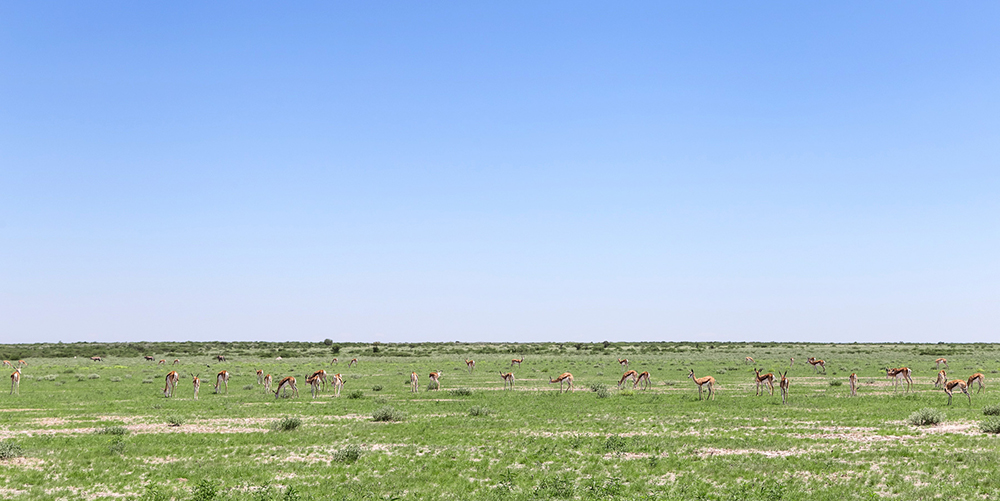There’s nowhere quite like Botswana for an endless horizon. Vast, wild spaces that beg to be explored. Chris Davies shares some of his favourite Botswana landscapes, along with a few tips for planning your overlanding trip.
Covid-19 may have put the brakes on overlanding for a while, but it can’t keep us homebound forever – the yearning for new horizons is too strong. We’re sharing stories to help you plan your next adventure for when travel starts up again.

The road into Mabuasehube – the Botswana side of the Kgalagadi Transfrontier Park – is one of the country’s great drives: it’s not technical and is gun-barrel straight, but there’s a palpable feeling that the adventure’s just begun. There is some thick sand on both sides of the park’s East Gate, so a high-clearance 4×4 is definitely required. It’s at its prettiest in summer, if it has rained, when the verge is lined with bright yellow duwweltjie flowers.

Number 3 campsite at Mabuasehube Pan has a wonderful view across the pan. There’s a permanent waterhole about 800m to the north and lions are regularly seen. Stands 2 and 3 are quite close together – book both if you’re a larger group. All stands in the park have a shade frame and pit toilet/bucket shower rig, but no water or other facilities available.
Kgalagadi celebrates 20 years
The Kgalagadi Transfrontier Park (KTP) is 20 years old this year. To mark the milestone, the KTP is celebrating with a competition. Simply share your Kgalagadi images from the past two decades on your own social media using the hashtags #Kgalagadi2020 and #TravelTomorrow. You could win great prizes, including T4A products and short trips. Read more: KTP turns 20

Northeast of Mabuasehube lies Khutse Game Reserve, probably Botswana’s least-visited park. It’s a bit out of the way and game is generally scarce, but it has all the wide-open beauty of the Kalahari in spades. There’s a new gravel road extending up from Letlhakeng so although 4×4 is advisable, you won’t need it too often. You’re unlikely to see anyone else in the park, but if you crave complete isolation then try Moreswe Pan (pictured). Stand 2 at Moreswe has the best view, but beware it’s on a bit of a slope.
Also read: Taking the Tracks4Africa Navigation App Off-Road in Botswana

Piper Pan, in the Central Kalahari Game Reserve, is arguably the best camping area in the Kalahari for wildlife. Summer is the best time for animals, and you’ll likely find large herds of springbok, oryx, zebra and eland. The open flats are also ideal for cheetah – look for them napping under one of the few larger trees.
Also read: How to Book Campsites in Botswana’s National Parks

The grassy plains outside of Moremi’s Third Bridge Campsite are a good place to see cheetah on the prowl. The wildlife around Third Bridge is generally excellent, but it’s important to check on accessibility of the bridge. Third Bridge is affected by water levels and ‘traffic’, so if you’re planning to drive between there and Xakanaxa, be sure to ask the park’s gate staff if the bridge is open.
Also read: Three Must-See Wilderness Wonders in Botswana’s North

Xini Lagoon lies between Moremi’s Third Bridge and South Gate, and is another stunning span of open delta plains. In summer it’s an excellent pasture for Cape buffalo and you may come across herds several hundred strong. Moremi’s roads are often flooded in summer, but more from rain than the level of the delta. You’ll find plenty of deep pools, but with mostly firm ground underneath. Plenty of fun driving if you take it slow.

The road into Nxai Pan National Park crosses a sea of endless grass. Golden yellow for most of the year, the summer rains turn it a brief, bright green. Just north of the park gate there’s a particularly deep stretch of sand – definitely 4×4 only. The roads around the pans can also be sticky after the rain so avoid driving too close to the edges.
Also read: How to Self-Drive Botswana in 10 Days

To the south of Nxai Pan National Park lies the smaller Kudiakam Pan. There’s usually little game, but it comes alive in summer. Be very careful of driving on the pan if there’s even a hint of water. The staff at the entrance gate can give you a good idea of conditions.
Kudiakam Pan is the home of Botswana’s famous Baines’ Baobabs, a clutch of mighty trees that have stood for over a thousand years. There are three stunning campsites scattered around the pan’s edge. Each has its own impressive baobab – stand 2 (pictured) has two. The views from all the campsites are simply breathtaking: a 360° horizon and an awe-inspiring sense of space.
Also read: Camping at Botswana’s Baines’ Boaobabs
The Botswana Self-Drive Guide is the quintessential guide for overlanders who want to explore this country. It’s packed with detailed maps, trip planning tips and useful contact details.

